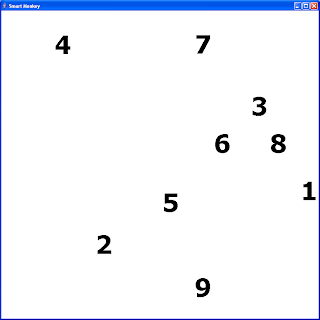 Ottawa - Canada's capital city - has been hit today with a snow storm. 42 cms of snow have fallen in the last 24 hours!
Ottawa - Canada's capital city - has been hit today with a snow storm. 42 cms of snow have fallen in the last 24 hours!Snow storms can be visualized and measured with radar imagery. This photo shows the Ontario southern area - Ottawa is in the middle. It is provided in real time by the weather office's website using data coming from its radar weather stations. It indicates that snow is falling over Ottawa at a rate of 2 cms per hour. After almost a full day of snow we indeed got over 40 cms of snow.
How does the radar work? Station on the ground emits radio waves in different directions. The larger the size of snow or ice pallets, the better they reflect the radio signal back to its source. After a series of measurements a map is generated like the one above.
I very much enjoyed watching the movie The Day After Tomorrow on the TV channel space this afternoon. It was ideally fitted to our own local climate situation!




